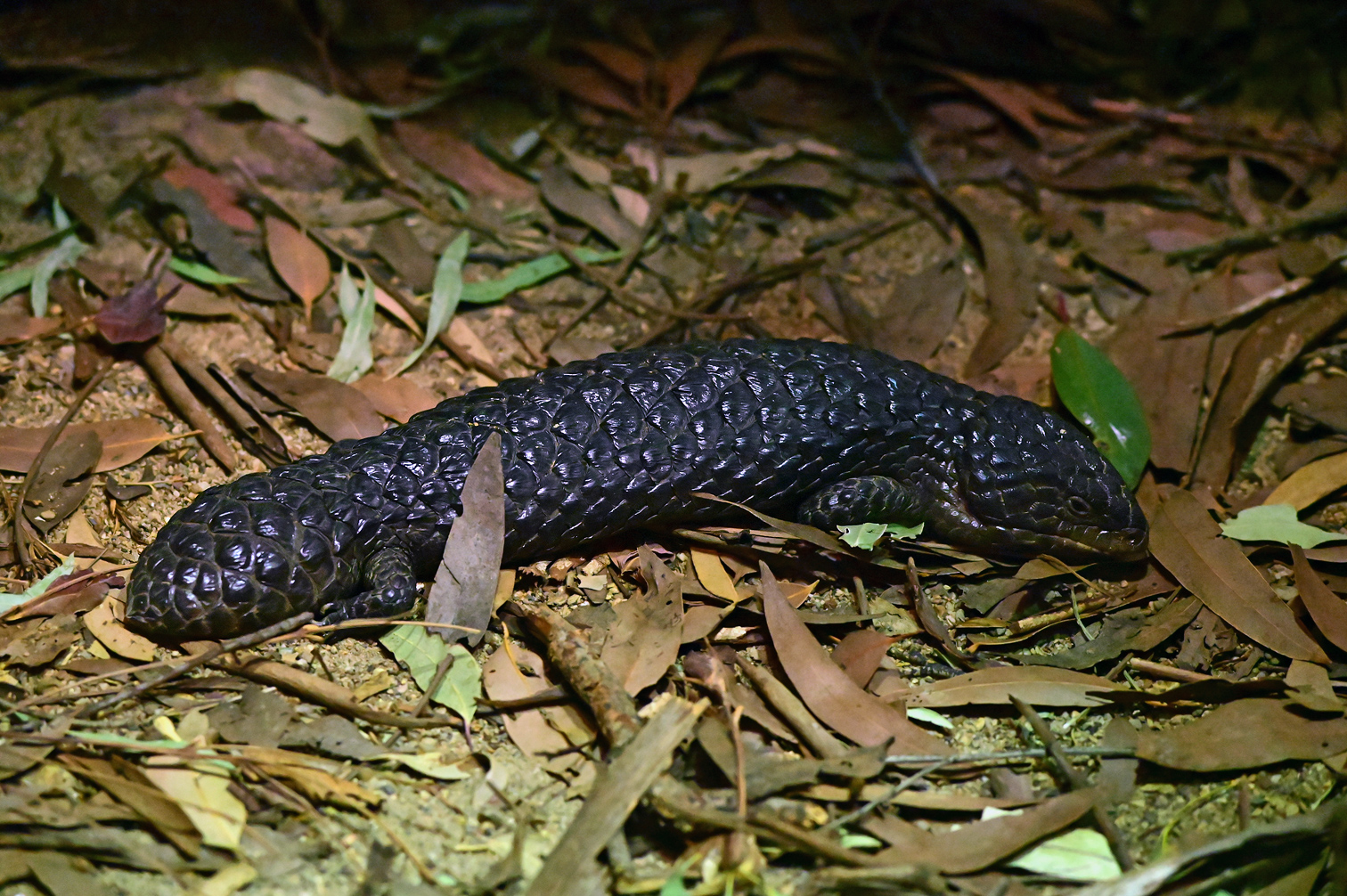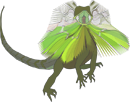
|
Shingleback
Tiliqua rugosaOther Names: Bobtail, Two-headed Lizard, Pinecone Lizard, Stumpy-tail, Sleepy Lizard, Boggi. Family: Scincidae (Skink family) Size: 26-31 cm Distribution: The southernmost parts of WA, over half of southern SA, about 3/4 of western NSW, half of western VIC, 1/3 of southern QLD not including the coastal regions of QLD. Not in TAS or NT. Habitat: The habitat of the species includes shrublands and desert grasslands to sandy dunes. These skinks are well known, due to a preference for sun basking in open areas, and are often seen along roadsides or other cleared areas in its range. On average, individuals have a home range of four hectares, and can move up to 500 metres per day. References: Wilson and Swan, Wikipedia. About the ShinglebackTiliqua rugosa has a heavily armoured body and can be found in various colours, ranging from dark brown to cream. Individuals are known to live for 50 years in the wild. It has a triangular head and a bright blue tongue. Its short, stumpy tail is similar in shape to its head. This possibly evolved as a defence mechanism against predators, and has led to the common name of "two-headed skink". Its short tail also contains fat reserves, which the lizard lives upon during brumation in winter. There is conflicting information available about whether or not shingleback lizards can shed their tails. Wikipedia says that "Unlike many skinks, shinglebacks do not exhibit autotomy and cannot shed their tails." Another source says that "Shingleback lizards have the amazing ability to detach their tail when attacked and then growing it back at a later date". Diet: Tiliqua rugosa is an omnivore that eat snails, insects, carrion, vegetation and flowers. Mainly eats insects and berries. They have also been known to eat human food, such as sausage and chicken, as well as fruits such as banana and passionfruit. Breeding: Shinglebacks are one of the most romantic lizards, and even one of the most romantic of all reptiles. The shingleback gives birth to live baby lizards (unlike most reptiles which lay eggs). It gives birth to broods of one to four relatively large offspring. Unlike most lizards, the species tends to be monogamous extending outside the breeding season of September through November. Such pairs have been known to return to each other every year for up to 20 years. When they are born, the young immediately consume their afterbirth. They stay with their parents for several months before moving on, but they remain in close proximity, forming a colony of closely related skinks. The male of a monogamous pair eats less while parenting, remaining alert and ready to give an alarm. Danger: The shingleback skink has become a popular pet among Australian enthusiasts. They are relatively docile and easy to feed and maintain. A permit may be required to keep them in some areas. Predators: The species was once preyed upon by dingos, Australian pythons such as Morelia spilota, and local peoples; a threat is now more likely to come from large, introduced feral species, such as foxes and cats.
See Also
Australian Mammals Share This PageContent is copyright © Survival.ark.au 2005-2024 All Rights Reserved. Terms of Use. Definitely read the disclaimer before trying anything from this website, especially including the practices and skills. This website uses affiliate links – this doesn't cost you any more, but I get a commission on purchases made through the website. As an Amazon Associate I earn similarly from qualifying purchases. |

